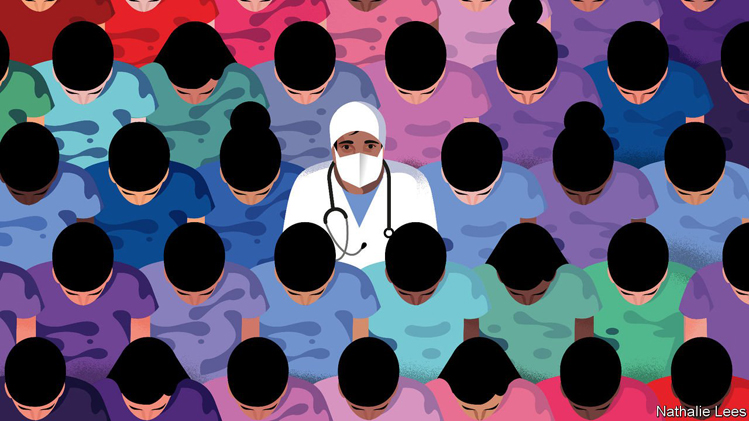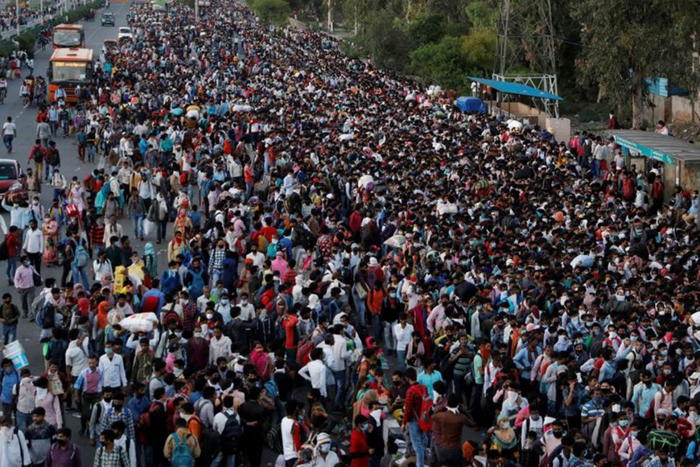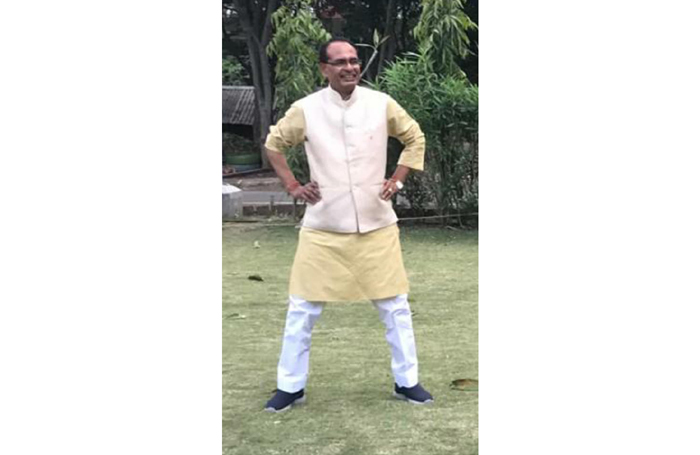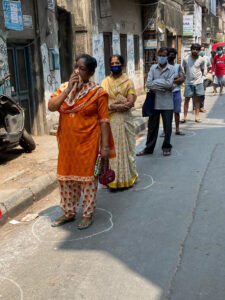World Health Organization (WHO), the UN agency for global monitoring and supervision for diseases control, particularly, pandemics like current Coronavirus or COVID-19 outbreak is not exactly impressed with India’s total lockdown for 21 days as announced by the Prime Minister Narendra Modi. WHO director general Dr.Tedros AG and executive director for emergency health programme, Dr. Michel Ryan and his team’s technical lead, Dr Maria V. Kerkhove deliberated on global responses including in India. They stressed more on emergency and long-term ‘public health-centric approach and measures’ instead of sweeping and prolonged lockdowns. They held their latest press conference through video conferencing and online on 25 March (Pls click on the highlighted to go through the PC for their detailed observations).
The WHO top guns commented on our country situation while reacting to a question from Ankit Kumar, a reporter of India Today and Aaj Tak group. Referring to the current lockdown that has interned 1.3 billion Indians, he asked for the WHO advices to Indian policymakers in case of resurgence of the outbreak following the withdrawal of the shutdown. He even mentioned that India can’t afford another long spell of curfew.
However, the video clipping of the IT news show, headlined ‘India lockdown: day 2/WHO lauds India’s efforts’ did not carry the nuanced WHO comments that had subtly cautioned about the futility of complete standstill in public life in absence of concerted public health interventions down to villages. For that matter, I did not find much overage of it in mainstream media. Neither had I found any mention of it in our union health ministry notifications, let alone the government’s response.
Dr. Ryan put it succinctly: “Lockdowns will only help to buy time but that must be used to fight the pandemic at the community- cluster- individual level.” On the India-specific question, the executive director observed: “There is transition from the lockdowns to the public health-driven approach in which people don’t have to stay locked in their homes for more time than it is absolutely necessary.”
Lockdown is no magic to stop the pandemic
The WHO DG repeatedly stressed on the primacy of ‘whole government approach’ and ‘total commitment of the political leadership’ across the globe on six primary tasks: Intensify and expand the network to Trace out and Test as well as Isolate and Quarantine the carriers to break the virus transmission chain and treat the infected. To augment the process, Expand health worker teams, train and deploy them down the levels.
Calling the COVID-19 ‘the public enemy number one against our shared humanity’, Dr Tedros virtually rebuked the global leaders: “WHO is telling the world for two months. We have already squandered the first window of opportunity to suppress and control. Public health-centric approach and whole government approach as well as total commitment of political leadership are needed. Health sector alone can’t stop the pandemic. Communities should be rallied around.”
On India, he said: “The six steps will help India to stop the virus from spreading to more places. India has capacity and it is good see that India is taking early measures. Cut it from the bud”.
His two colleagues dealt more on the impact of lockdown of public life on suppression and control of the pandemic’. Dr. Ryan put it succinctly: “Lockdowns will only help to buy time but that must be used to fight the pandemic at the community- cluster- individual level.” On the India-specific question, the executive director observed: “There is transition from the lockdowns to the public health-driven approach in which people don’t have to stay locked in their homes for more time than it is absolutely necessary.” Repeating the DG’s stress on the six concerted medical steps to break the virus transmission, Dr Ryan further said: “If these things are put in place and I know these are being done, we can accelerate the process.” His caution against any fell sweep was unmistakable as he felt India being a ‘vast country’ can’t be considered ‘one single entity’.
Importantly, they have used more the expression ‘physical distancing’ rather than ‘social distancing’ that our prime minister and his echo-chambers have been using without bothering about the huge differences in their connotations. “ Physical distancing does not mean social distance. Take care of older people more and others who need it,” The DG said. Calling COVID-19 outbreak the first pandemic of 21st century, Dr Ryan counted the role of internet, AI and other new technologies including interactive apps to trace and track the human carriers as well as in networking communities in fighting the menace. “People are more connected now while being physically distanced at this trying time.”
Reminding the India’s fight against the Polio virus that had crippled generations of children in the country, he lauded the country’s strategy. “India got rid of polio by breaking down the transmission chain, district by district to village level. If India does the same thing, puts the surveillance and health care measures in places systematically, there is a way out.” He warned that India and other countries alike may face the resurgence of the virus if the ‘protective measures are not implemented’. “ If there is any lesson to learn from this pandemic, it is the need to develop public health system at global, national and sub-national levels,’’ he Added.
Dr. Kerkhove drew upon the Chinese experience in combating Corona, particularly, the early epicenter of the pandemic in the big city of Wuhan in Hubei province. “It was not a total lockdown in all places across China that came all at once. They applied different intensities and different levels of measures. They have looked at it with a staggering approach in lifting the lockdown, because systems are now put in places,’’ she observed. According to her, no locally transmitted indigenous case was reported from the Chinese epicenter lately.
Maintaining that WHO has gone through the country experiences of ‘so-called lockdowns, distancing and public health measures’, she said: “We need to learn from all these countries who have applied these measures at different level of intensity. It’s important to learn from every country’s epidemiology and know what succeeds there.” Otherwise, countries will face an ‘endless cycle’ of lockdown- withdrawal-resurgence-lockdown again, she warned.
Does our hon’ble prime minister listen to the WHO? Will he ever bother to take questions from experts, journos and lay people of the land in lieu of his customary monologue on television? Will he tell his countrymen whether he had consulted global and national experts before announcing the total and sweeping shutdown that has ironically thrown out millions of migrants and other laboring people on roads to nowhere ?
It’s physical not social distancing
Importantly, they have used more the expression ‘physical distancing’ rather than ‘social distancing’ that our prime minister and his echo-chambers have been using without bothering about the huge differences in their connotations. “ Physical distancing does not mean social distance. Take care of older people more and others who need it,” The DG said. Calling COVID-19 outbreak the first pandemic of 21st century, Dr Ryan counted the role of internet, AI and other new technologies including interactive apps to trace and track the human carriers as well as in networking communities in fighting the menace. “People are more connected now while being physically distanced at this trying time.”
They admitted the worrisome shortage of production and supply of Personal Protective Equipments (PPE) like masks, gloves, dresses for the health workers as well as live-saving medical support devices like ventilator in most affected countries. As the world was clearly not prepared for the pandemic, they urged to increase global production and supply which has hit secondarily for lockdowns in countries.
Meanwhile they appealed to rich countries, particularly the G-20 group to support low-income and middle-income countries. WHO is not known for rubbing the world’s rich and powerful wrong way, particularly the US government, as it depends much on American largesse. So an American journalist’s question on Trump’s initial nonchalance on Corona outbreak was addressed based on Donald Trump’s changed tune.
Does Modi listen?
Does our hon’ble prime minister listen to the WHO? Will he ever bother to take questions from experts, journos and lay people of the land in lieu of his customary monologue on television? Will he tell his countrymen whether he had consulted global and national experts before announcing the total and sweeping shutdown that has ironically thrown out millions of migrants and other laboring people on roads to nowhere ?
It is commendable that the PM has announced a package of Rs 15000 crores for the emergency public health measure. But that makes a provision of paltry sum of approx. Rs 115 for 130 million Indians per head. Is that enough to fight the curse? Will he beseech his friends and non-so friendly captains of industry and business to cough up money for the national emergency in line of the WHO appeals to the rich countries? After all, he has bailed them out several times. Now it is time for them to pay back to the nation.
It’s good that the regime has announced a package of Rs 1.7 lakh crores, though it is less than one per cent of estimated Indian GDP for 2019-20, for cash transfer to the poor and migrants. But how they will reach markets and shops if they have to face police brutalities on their way as it is being reported from various parts of the country? What about the ‘black-marketing’ of the essentials including food and medicines, partly because of lack of supplies?
What was the status of our public health system before the outbreak in the wake of slow-but-steady dismantling of our state-run public health system since the UPA-2 regime? Now that there is global, national and statewise shortage of emergency PPE as well as testing kits and other apparatus, what our government was doing in last two months when WHO had warned of the increasing danger? Did the government change its test kit production and procurement policy which was reportedly entrusted to a single Ahmadabad-based private company?
It is commendable that the PM has announced a package of Rs 15000 crores for the emergency public health measure. But that makes a provision of paltry sum of approx. Rs 115 for 130 million Indians per head. Is that enough to fight the curse? Will he beseech his friends and non-so friendly captains of industry and business to cough up money for the national emergency in line of the WHO appeals to the rich countries? After all, he has bailed them out several times. Now it is time for them to pay back to the nation.
Your buddy Xi Jin Ping has bungled at home by suppressing the whistleblowers in Wuhan and undermined the gravity of the crisis initially. Will you please learn the lesson from the perils of one-way traffic between the rulers and the ruled?
Questions are many more. But who bothers for WHO and recalcitrant journos, who the hell they may be.


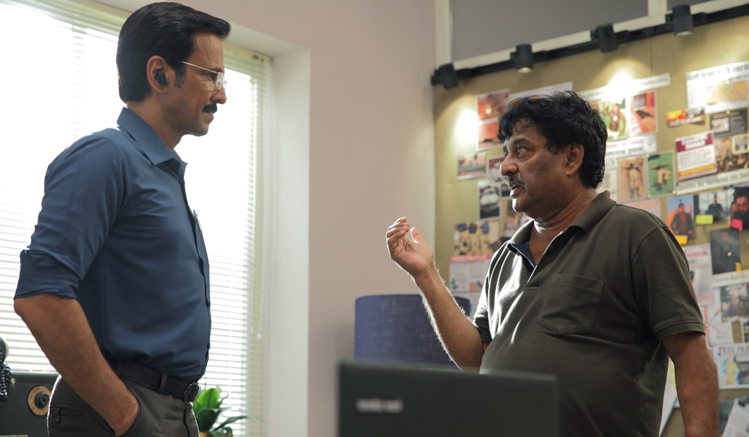

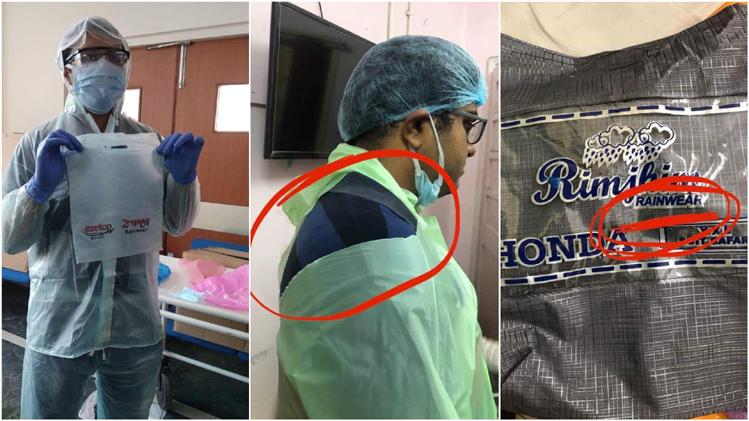

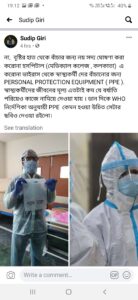
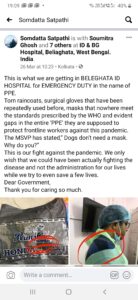
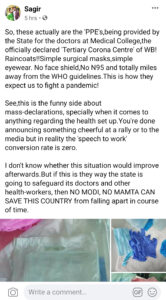 There is a shortage of N95 masks in the country and the shortage may get worse worldwide, a report had said. However, doctors and other health workers who are dealing with COVID-19 patients are required to have proper protective gear to avoid getting infected. One of three doctors in Mumbai who was infected died recently.
There is a shortage of N95 masks in the country and the shortage may get worse worldwide, a report had said. However, doctors and other health workers who are dealing with COVID-19 patients are required to have proper protective gear to avoid getting infected. One of three doctors in Mumbai who was infected died recently.